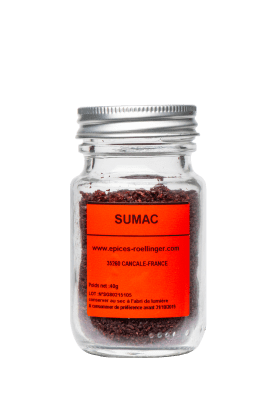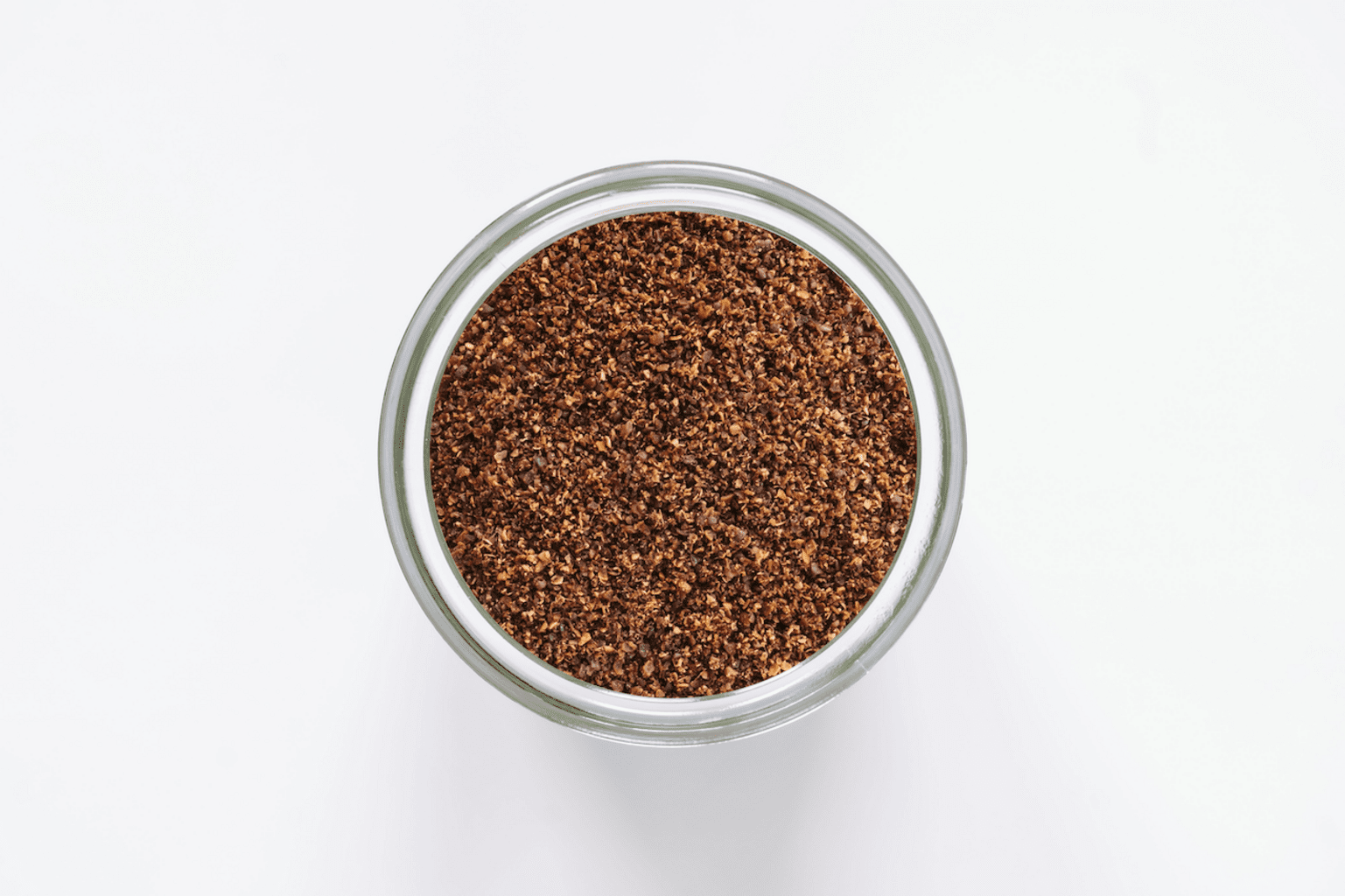Sumac

Ingredients: Sumac in powder
Sumac brings an interesting tart notes with citrus and vinegar flavor.
€7.40
40 g
Recommendations
To use as a condiment to perfume homemade vinaigrettes, vegetables, lentils, eggs, or on a fresh cheese with herbs.
The sumac is also perfect for fishes and meats.
-
Allergens
Absent, except for cross-contamination.
May contain traces of sesame, celery, mustard, soy. - Origin Egypt or Lebanon
- Storage / Use In a cool, dark, dry place.
€185 / kg
Olivier Rœllinger's words
Sumac plays a key role in the delicious cuisines of Syria, Lebanon and Egypt, flavouring fish as well as meat and vegetables. Romans were already using it before the arrival of lemon.
I like to add it to a spice mix to obtain a tart note. But, in a tomato or lettuce salad, replace the vinegar with sumac juice, plus a little mint and dried, ground garlic — it will win you over.
The great Arab mix containing sumac is Zaatar, which combines it with toasted sesame seeds and thyme. For Zaatar : Mix 50 g toasted sesame seeds with 25 g ground sumac and 25 g dried powdered thyme. Delicious with a bit of thyme and olive oil. I have also worked on the creation of a spice blend Zaatar ( See Cultural blends).
I like to add it to a spice mix to obtain a tart note. But, in a tomato or lettuce salad, replace the vinegar with sumac juice, plus a little mint and dried, ground garlic — it will win you over.
The great Arab mix containing sumac is Zaatar, which combines it with toasted sesame seeds and thyme. For Zaatar : Mix 50 g toasted sesame seeds with 25 g ground sumac and 25 g dried powdered thyme. Delicious with a bit of thyme and olive oil. I have also worked on the creation of a spice blend Zaatar ( See Cultural blends).
Story
Sumac is a shrub belonging to the family Anacardiaceae. Sumac grows in Turkey, Syria and Sicily. There are several botanical varieties of sumac. The variety in North America are different from the varieties in Europe and around the Mediterranean Sea. We work with the variety ‘Rhus coriaria’ from Egypt.
In ancient times, sumac was a spice appreciated by the Romans who imported it from Syria. Later, the culture of sumac was developed in Sicily and in the South of Italy until World War II. Sumac berries and leaves contain tannic acid, which was needed for leatherworking by tanneries. learned name of sumac. If sumac has been popular and traditional in the Middle Eastern cuisine for a very long time, Europe is enjoying a recent craze for its use in the kitchen.
Sumac comes from the Arabic word 'summāq' which means ‘red’. Sumac berries, which are about the size of a peppercorn, turn bright purple-red when they reach maturity on the shrub.
The sumac we work with comes from Egypt and Lebanon.
The berries are dried, sorted, and they are then crushed. It is easier to use ground sumac than whole berries which are hard and oily.
In ancient times, sumac was a spice appreciated by the Romans who imported it from Syria. Later, the culture of sumac was developed in Sicily and in the South of Italy until World War II. Sumac berries and leaves contain tannic acid, which was needed for leatherworking by tanneries. learned name of sumac. If sumac has been popular and traditional in the Middle Eastern cuisine for a very long time, Europe is enjoying a recent craze for its use in the kitchen.
Sumac comes from the Arabic word 'summāq' which means ‘red’. Sumac berries, which are about the size of a peppercorn, turn bright purple-red when they reach maturity on the shrub.
The sumac we work with comes from Egypt and Lebanon.
The berries are dried, sorted, and they are then crushed. It is easier to use ground sumac than whole berries which are hard and oily.
